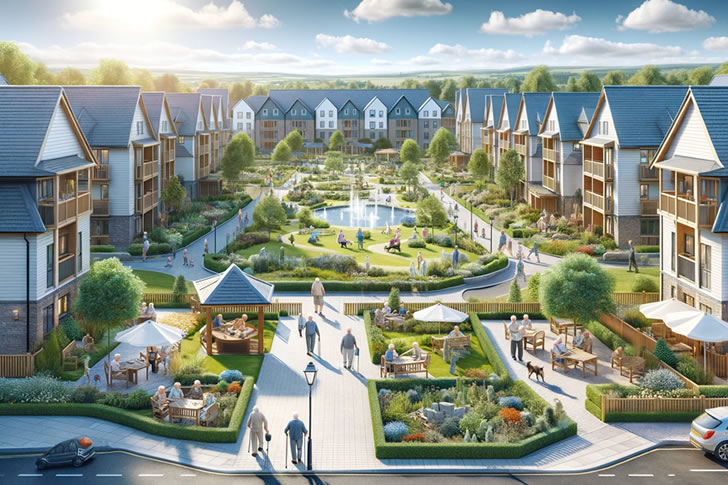Serenity: A Guide to New Luxury Retirement Villages
An Introduction to Luxury Retirement Villages
Retirement villages are evolving. The traditional image of retirement living is being replaced by new, luxury developments that offer not only health care but also a vibrant, resort-like lifestyle. These luxury retirement villages cater to the growing demographic of aging populations who are seeking serene environments with high-end amenities. A survey by the American Seniors Housing Association (ASHA) indicated that the number of luxury retirement communities has quadrupled in the last two decades alone, marking a significant shift in how we perceive life post-retirement.

What Defines a Luxury Retirement Village?
Luxury retirement villages, unlike standard retirement communities, provide expansive accommodations and more sophisticated amenities. These amenities include state-of-the-art wellness facilities, gourmet dining experiences, and concierge services—all designed to offer comfort and convenience in one’s golden years. According to a report from Knight Frank, luxury retirement communities now often include spas, fitness centers, and even business lounges, reflecting a more modern, active lifestyle choice.
The Appeal of Luxury Retirement Living
One of the key appeals of these villages is their commitment to providing a high quality of life. It is not just about having a place to live, but having a place to thrive. For many seniors, staying active and engaged in a community setting is vital for their mental and physical health. Luxury retirement villages often host a variety of social events and activities, from art classes to lecture series, encouraging social interaction and lifelong learning. A study from the National Institute on Aging found that social interaction can help seniors maintain their well-being and even extend their lifespan.
Geographical Trends in Luxury Retirement Villages
Geographically, these luxury retirement options are spreading globally but are particularly popular in regions like North America and Europe. In the United States, states such as Florida, California, and Arizona, known for their favorable climates, have seen a significant rise in such developments. Similarly, Europe’s warmer regions, such as the Mediterranean coast of Spain and southern France, are popular locations for luxury retirement properties. The global market for luxury retirement living is expanding, with growth rates anticipated to increase by 3.5% per annum over the next decade, as per market surveys from Jones Lang LaSalle.
Cost Considerations
Investing in a luxury retirement village can be significant, as costs are considerably higher than in traditional retirement communities. Pricing structures typically involve a substantial upfront purchase price followed by ongoing fees that cover services and maintenance. Monthly fees can range anywhere from $3,000 to over $10,000, depending on the location and extent of services offered. Despite the high costs, many find the investment worthwhile for the peace of mind and quality of life these communities offer. Furthermore, some residents see it as a real estate investment, with properties in high-demand areas potentially increasing in value over time.
The Future of Retirement Living
As the demand for more dynamic and engaging retirement options grows, luxury retirement villages are expected to evolve as well. Future trends may include even more personalized services and integration of advanced technology that can enhance lifestyle and care. Technologies such as virtual reality for cognitive health, robot-assisted technology for mobility, and health monitoring apps are already being integrated into some communities, setting the stage for a new era of retirement living.
Choosing the Right Luxury Retirement Village
For those considering a luxury retirement village, it’s essential to look at several factors including location, services, amenities, community activities, and cost structure. Prospective residents should visit several communities to get a firsthand feel of the life there. Also, consulting with current residents about their experiences can provide deeper insights into the daily living and community culture of the village. It’s also recommended to review the legal and financial terms thoroughly to ensure they align with personal retirement planning.
Conclusion
Luxury retirement villages represent a significant shift in how we view retirement—transitioning from a passive to a more active, enriching lifestyle. Offering amenities that rival top-rated resorts and personalized services, these communities cater to the needs and desires of a generation that views retirement as a time of exploration and growth. While the cost of entry is high, the quality of life and vibrant community engagement they offer can justify the investment, making them an appealing choice for many looking towards retirement.







Recent Comments